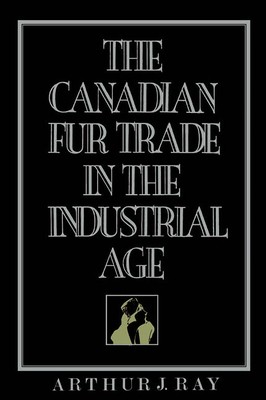
- We will send in 10–14 business days.
- Author: Arthur J Ray
- Publisher: University of Toronto Press
- ISBN-10: 0802067433
- ISBN-13: 9780802067432
- Format: 15.2 x 22.9 x 1.9 cm, softcover
- Language: English
- SAVE -10% with code: EXTRA
Reviews
Description
Throughout much of the nineteenth century the Hudson's Bay Company had a virtual monopoly on the core area of the fur trade in Canada. Its products were the object of intense competition among merchants on two continents - in Leipzig, New York, London, Winnipeg, St Louis, and Montreal. But in 1870 things began to change, and by the end of the Second World War the company's share had dropped to about a quarter of the trade. Arthur Ray explores the decades of transition, the economic and technological changes that shaped them, and their impact on the Canadian north and its people.
Among the developments that affected the fur trade during this period were innovations in transportation and communication; increased government involvement in business, conservation, and native economic welfare; and the effects of two severe depressions (1873-95 and 1929-38) and two world wars.
The Hudson's Bay Company, confronting the first of these changes as early as 1871, embarked on a diversification program that was intended to capitalize on new economic opportunities in land development, retailing, and resource ventures. Meanwhile it continued to participate in its traditional sphere of operations. But the company's directors had difficulty keeping pace with the rapid changes that were taking place in the fur trade, and the company began to lose ground.
Ray's study is the first to make extensive use of the Hudson's Bay Company archives dealing with the period between 1870 and 1945. These and other documents reveal a great deal about the decline of the company, and thus about a key element in the history of the modern Canadian fur trade.
EXTRA 10 % discount with code: EXTRA
The promotion ends in 18d.08:46:38
The discount code is valid when purchasing from 10 €. Discounts do not stack.
- Author: Arthur J Ray
- Publisher: University of Toronto Press
- ISBN-10: 0802067433
- ISBN-13: 9780802067432
- Format: 15.2 x 22.9 x 1.9 cm, softcover
- Language: English English
Throughout much of the nineteenth century the Hudson's Bay Company had a virtual monopoly on the core area of the fur trade in Canada. Its products were the object of intense competition among merchants on two continents - in Leipzig, New York, London, Winnipeg, St Louis, and Montreal. But in 1870 things began to change, and by the end of the Second World War the company's share had dropped to about a quarter of the trade. Arthur Ray explores the decades of transition, the economic and technological changes that shaped them, and their impact on the Canadian north and its people.
Among the developments that affected the fur trade during this period were innovations in transportation and communication; increased government involvement in business, conservation, and native economic welfare; and the effects of two severe depressions (1873-95 and 1929-38) and two world wars.
The Hudson's Bay Company, confronting the first of these changes as early as 1871, embarked on a diversification program that was intended to capitalize on new economic opportunities in land development, retailing, and resource ventures. Meanwhile it continued to participate in its traditional sphere of operations. But the company's directors had difficulty keeping pace with the rapid changes that were taking place in the fur trade, and the company began to lose ground.
Ray's study is the first to make extensive use of the Hudson's Bay Company archives dealing with the period between 1870 and 1945. These and other documents reveal a great deal about the decline of the company, and thus about a key element in the history of the modern Canadian fur trade.


Reviews